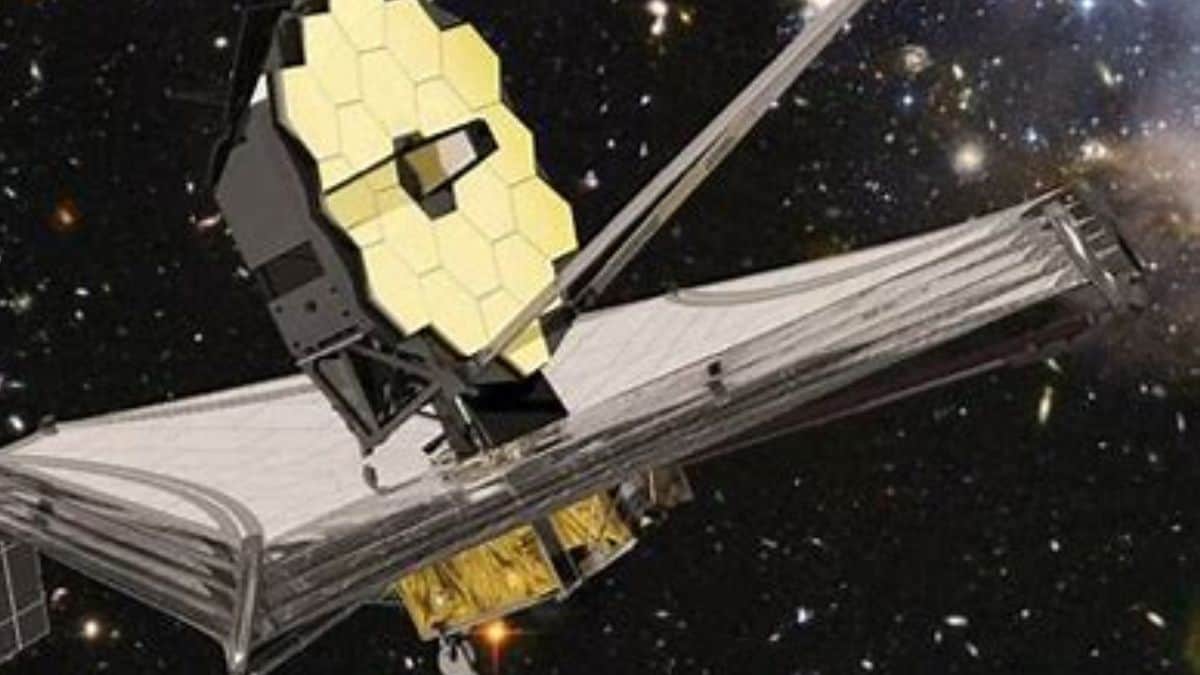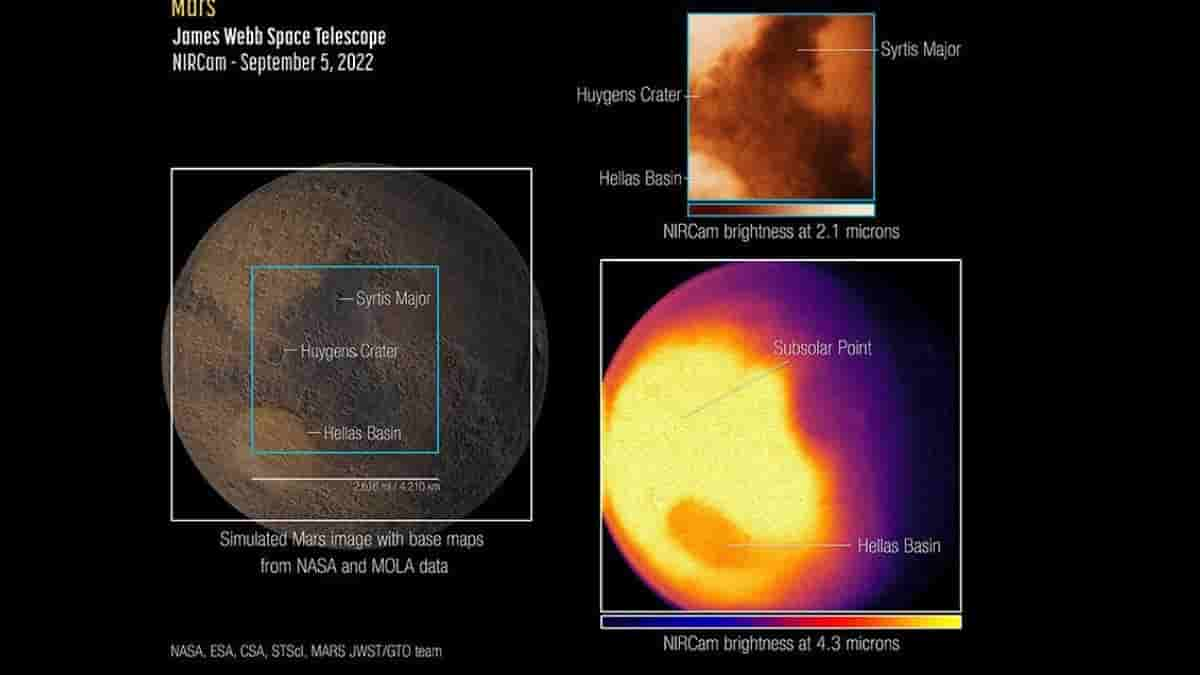You can get full views of planets through James Webb Telescope; here are pictures of Mars shared by NASA

Astronomers may now better understand Mars’ atmosphere and identify events and substances that earlier observatories were unable to detect thanks to the James Webb Space Telescope (JWST), which was launched in 2017.
With the NASA Goddard Space Flight Center, Geronimo Villanueva says that “now you can really get these full views of the planet in the whole infrared range at extraordinary sensitivities.”
The eastern side of Mars may be seen in images taken by JWST at two different infrared wavelengths. While the shorter wavelength (top right, above) reveals reflected sunlight, revealing surface features frequently seen in visible-light images, the longer wavelength (top left, above) reveals information about heat emitted from the Martian surface and atmosphere as well as the concentrations of carbon dioxide in the atmosphere (bottom right, above).
Imaging nearby planets like Mars presents a challenge for an instrument like JWST, which was designed to detect faint, far-off objects. Since the infrared sunlight reflected from Mars overloads JWST’s detectors, Villanueva and his colleagues had to change their approach by performing brief exposures and just sampling some of the light from the detectors.
Given that Mars orbits the sun quite quickly compared to other objects JWST often photographs, it was particularly difficult to catch Mars. “When we opened the photographs and when we obtained the spectra, we actually could acquire the data and they were good data,” team member Sara Faggi said.
The first images and spectra of Mars from JWST have not revealed anything we didn’t already know about the planet, identifying dust, surface rocks, and atmospheric properties like water and carbon dioxide. They do, however, provide a proof of concept for obtaining data that other observatories are unable to.

Because JWST is so sensitive and close to Earth, it has the advantage of being able to picture the entire planet at once in high resolution. This should make it possible to examine events that occur over a brief period of time, such as dust storms, weather patterns, and seasonal changes.
The complete picture will also make it easier for researchers to find the origins of any detected trace gases. According to team member Giuliano Liuzzi, “hunting for these specific species and, ultimately, finding the sources of these species is a process that can be done in a lot more promising way with JWST.”


